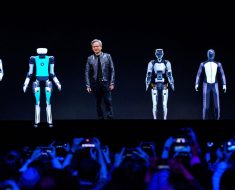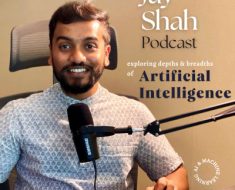This confusion around the ultimate role of generative AI in education has cast a pall over education technology (EdTech) companies and the education sector broadly amid heightened fears over subscriber growth. However, Morgan Stanley Research analysts think the market is skewing too negative in the debate over generative AI, while missing the technology’s potential ability to both increase efficiency at all levels of learning and, over the long term, improve quality and access to education—both positives for the EdTech sector.
“Generative AI could actually enhance the overall learning experience, by cutting down on administrative work and maximizing human interaction, as well as by reskilling or upskilling workers whose jobs have been affected by the technology,” says Brenda Duverce, an analyst on the Morgan Stanley Sustainability Research team. “These and other efficiencies could bring $200 billion in value to the global education sector by 2025, which could ultimately translate to higher revenue and lower costs for the best-positioned EdTech companies.”
Faster, Smarter, Easier
Generative AI’s core capabilities—creating and disseminating information—make it a logical fit in the education space. Primarily, it can enhance productivity and allow more time for higher-value activities: For instance, teachers could use a chatbot tool to review and correct essays and grade exams, check for accuracy and plagiarism or to prepare coursework, freeing them up to interact with students. Teachers could also use generative AI to tailor curricula and performance assessments to individual students’ needs for a more personalized learning experience. Virtual assistants, meanwhile, could help reduce labor costs by automating some administrative tasks like enrollment, onboarding, class scheduling and payments.
Over time, generative AI could parse the huge amounts of data captured by K-12, higher ed and companies providing corporate learning and development, helping these institutions make more informed decisions about program development, recruitment and retention and to fine-tune what they offer.
“Among education companies, the ones best positioned to generate returns have already begun rolling out some of these AI-powered products and features to customers.” says Duverce. “Those that develop unique offerings and differentiate themselves with innovation should perform well over the long term.”
An Evolving Workforce
Current generative AI technologies will likely affect a quarter of the occupations that exist today, rising to 44% within three years, according to Morgan Stanley Research estimates. But fears that substantial job losses and permanent displacement of workers will ensue may prove unfounded in the long term.
Education providers could find themselves in a unique position to meet the growing need for retraining workers displaced by the technology—including by helping them learn skills needed to use or develop generative AI.
Analysts estimate a $16 billion market opportunity within the next three years from reskilling workers displaced by generative AI, assuming that around 6% of affected workers will need reskilling.
“History tells us major changes in technological paradigms are often followed by periods of disruption, typified by economic growth and net job creation—an idea at odds with current concerns about job destruction in the wake of generative AI,” says Duverce.
For full insights on generative AI’s impact on the global education sector, ask your Morgan Stanley representative or Financial Advisor for the full report, “More Than Meets the Eye: Sizing the GenAI Opportunity in Education,” (Nov. 20, 2023). Morgan Stanley clients can access the report directly here.


![[2309.01431] Benchmarking Large Language Models in Retrieval-Augmented Generation [2309.01431] Benchmarking Large Language Models in Retrieval-Augmented Generation](https://aigumbo.com/wp-content/uploads/2023/12/arxiv-logo-fb-235x190.png)


